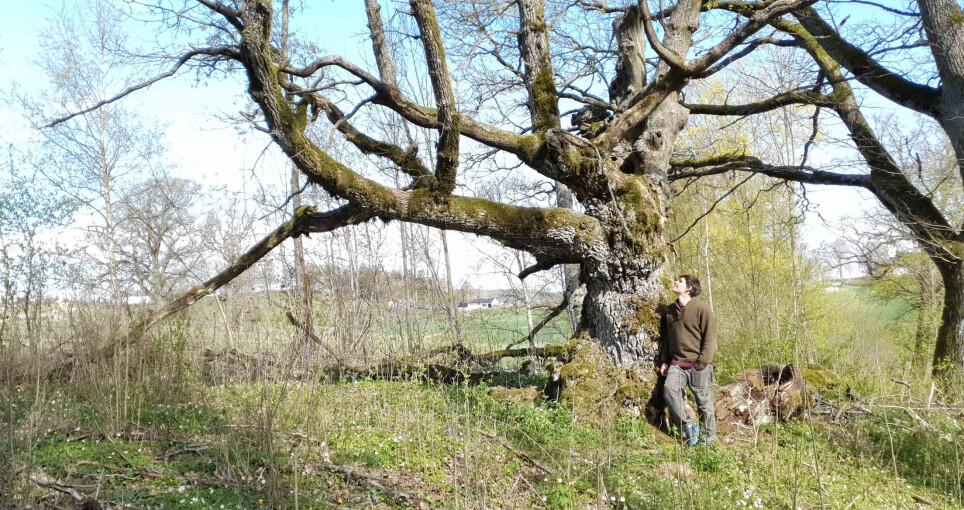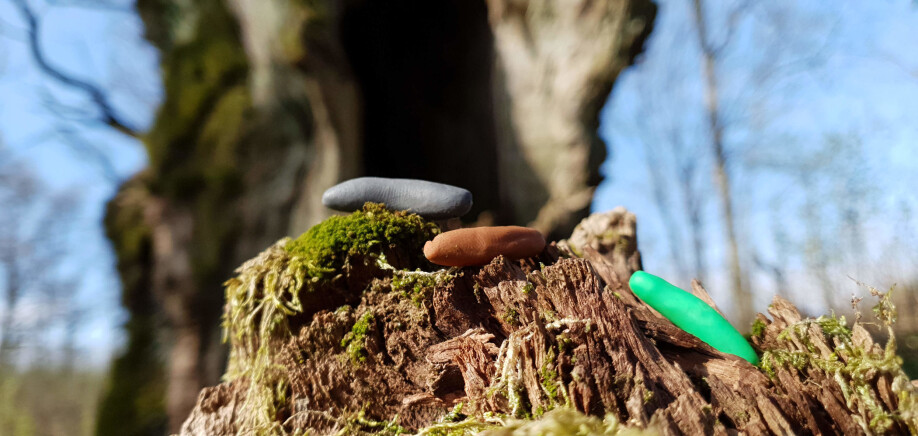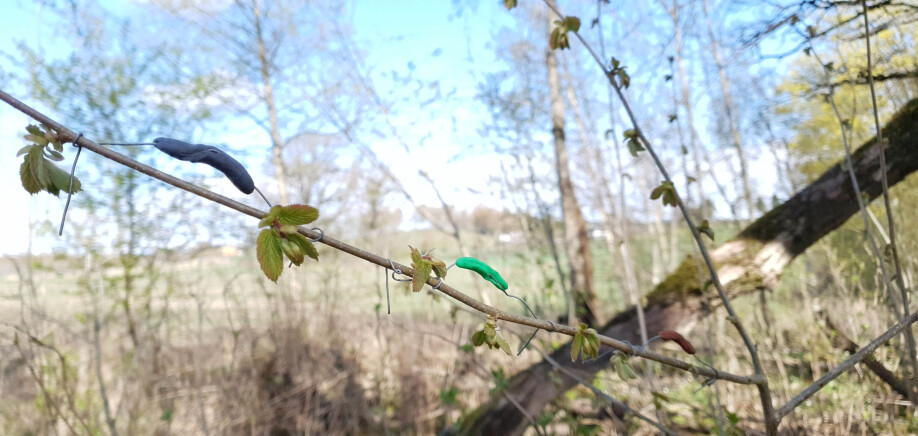THIS ARTICLE/PRESS RELEASE IS PAID FOR AND PRESENTED BY the Norwegian University of Life Sciences (NMBU) - read more

Old oak trees are nature's service station and full of drama
Old oak trees are very important for biodiversity, contribute to higher ecosystem functions and may play a vital role in controlling pests in agriculture.
Biodiversity loss and the associated environmental problems are one of the key challenges of our time. Biodiversity regulates many important processes in nature, such as carbon uptake, nutrient cycling, and oxygen production. The combination of them make up what is known as ecosystem functions, and are vital to human existence wellbeing.

Research from the Norwegian University of Life Sciences (NMBU) shows that old oaks are an important source of predatory beetle diversity - a function that could prove to be beneficial when it comes to controlling agricultural pests.
Important for biodiversity
The current rate of global diversity loss is now estimated by scientists to be faster than any other time in human history. An important measure to halt this trend is preserving important landscape elements.
“Old oak trees are key elements of biodiversity in the landscape, and hotspots for wildlife,” PhD candidate Ross Wetherbee at NMBU says.
“They have more associated animal and plant species than any other trees in Norway.”
These organisms include a variety of fungi, lichens, mosses, vascular plants, invertebrates such as insects and spiders, as well as birds and mammals.
In the modern agricultural landscape oak trees are wildlife oases, offering refuge from nearby uniform fields and cultivated forests.
Plasticine caterpillars
Just like on the African savanna, there are predators and prey fighting over life and death right outside your front door, in the bushes and trees, and in your flower bed.
Wetherbee has spent a considerable part of his PhD period, trawling the forests of southeast Norway, looking for suitable oaks and collecting invertebrates - mostly beetles - near them.
He paired twenty old oaks with twenty nearby young oaks. For each tree he placed different-colored artificial caterpillars made from plasticine.
For all trees, he measured the diversity of predatory beetles and the number of attack marks on the artificial caterpillars that he had placed.
Invertebrate attacks on artificial caterpillars have been attributed to a wide variety of insects and spiders, including ants, ground beetles, predatory bugs and parasitoid wasps.
Green least popular
It turned out that the green caterpillars got the least amount of aggression from nearby creepy-crawlies. The brown and grey ones were the most ‘popular’ – in the sense that they were attacked the most.
“I have to admit I was apprehensive beforehand about whether or not it would work with the plasticine caterpillars,” Wetherbee says.
“You know the saying, ‘if it walks like a duck and talks like a duck’,” he smiles. “Apparently for predatory arthropods, it is sufficient to vaguely resemble a duck...or a caterpillar in this case.”

More attacks in old trees
Over the course of the two summers Wetherbee captured a total of 465 beetle species of which 173 were predators. Both species richness and functional diversity of complementary traits were higher around veteran than young trees.
“Attack rates were also higher in older trees, indicating that these important biodiversity hotspots are influencing predation rates,” Wetherbee comments.
In total they put out 720 of these artificial caterpillars throughout the summer. When going to visit his field sites, Ross and his assistances would pass the time on the ferry from Moss to Horten rolling out these tiny sculptures, much to the interest and confusion of the other passengers.
“The first few caterpillars were fun, but by the end I had to bribe my helpers with coffee and cakes.”
More diverse roles
Species influence how ecosystems work (or functions), but rather than just the number of species, it is more important that they have a diverse set of traits. Traits are just aspects of the species like their size, shape and habits, and these traits influence how they interact with each other and how the ecosystem functions.
Wetherbee also examined how the old oak trees and their surroundings influenced beetle functional diversity – or how they affect the ecosystem. To do this, he looked at different groups of beetles: decomposers, predators, and flower visitors, and how they used the landscape and the old trees.
“I found that species richness and functional diversity in all groups were consistently higher around old trees in forests compared to those in open landscapes. Aside from that, different aspect of the landscapes and the trees were important for each of the groups of beetles and for the number of species and functional diversity.”
“This indicates old trees in forests are extremely valuable, and that diversity in the landscape increase both biodiversity and ecosystem functioning.”

Old oaks may benefit farmers
What does this mean in broader terms? Apart from confirming that old oak trees are important for biological diversity, Wetherbee’s results also have implications for agriculture.
Pests can have devastating consequences for farmers. However, possible control measures such as pesticides can have negative consequences for nature and people.
One alternative to pesticides is natural pest control, sometimes known as biological pest control - a method where pests are controlled by other live organisms. Different dieses, parasites and predators of pests, collectively called ‘natural enemies’ , have been used to control their populations.
“Diverse habitats have, not surprisingly, shown to be directly linked to a greater diversity of invertebrate predators,” Wetherbee says.
Previous research has shown that the coexistence of natural enemies potentially benefits the farmer. The higher the number of predatory species with diverse traits, the higher the probability that some of them will prey on pest species in nearby agricultural areas.
“My results suggest that old oaks, could play an important role for pest control in agricultural systems,” he says. “But it’s important to remember that you can’t just plant an old oak. Although there are some new conservation methods to simulate some aspects of old trees, the only real way to get an old oak is wait a few hundred years. And that is why it’s so important to protect them.”
To that point, Ross’ work concludes with the statement:
“Valuing and protecting veteran trees and their communities is an essential step towards a more sustainable system of management that has the possibility of promoting both the wellbeing of people and biodiversity,” he concludes.
References:
Ross Wetherbee et.al.: Veteran trees are a source of natural enemies. Sci Rep, 2020.
Ross Wetherbee et.al.: Hollow oaks and beetle functional diversity: Significance of surroundings extends beyond taxonomy. Ecol Evol., 2020.
See more content from NMBU:
-
Shopping centres contribute to better health and quality of life
-
We're eating more cashew nuts – and the consequences are serious
-
Do young people with immigrant parents have better health?
-
Who’s picking your strawberries this summer?
-
Can coffee grounds and eggshells be turned into fuel?
-
Rising housing costs fuel inequality in Norway





































